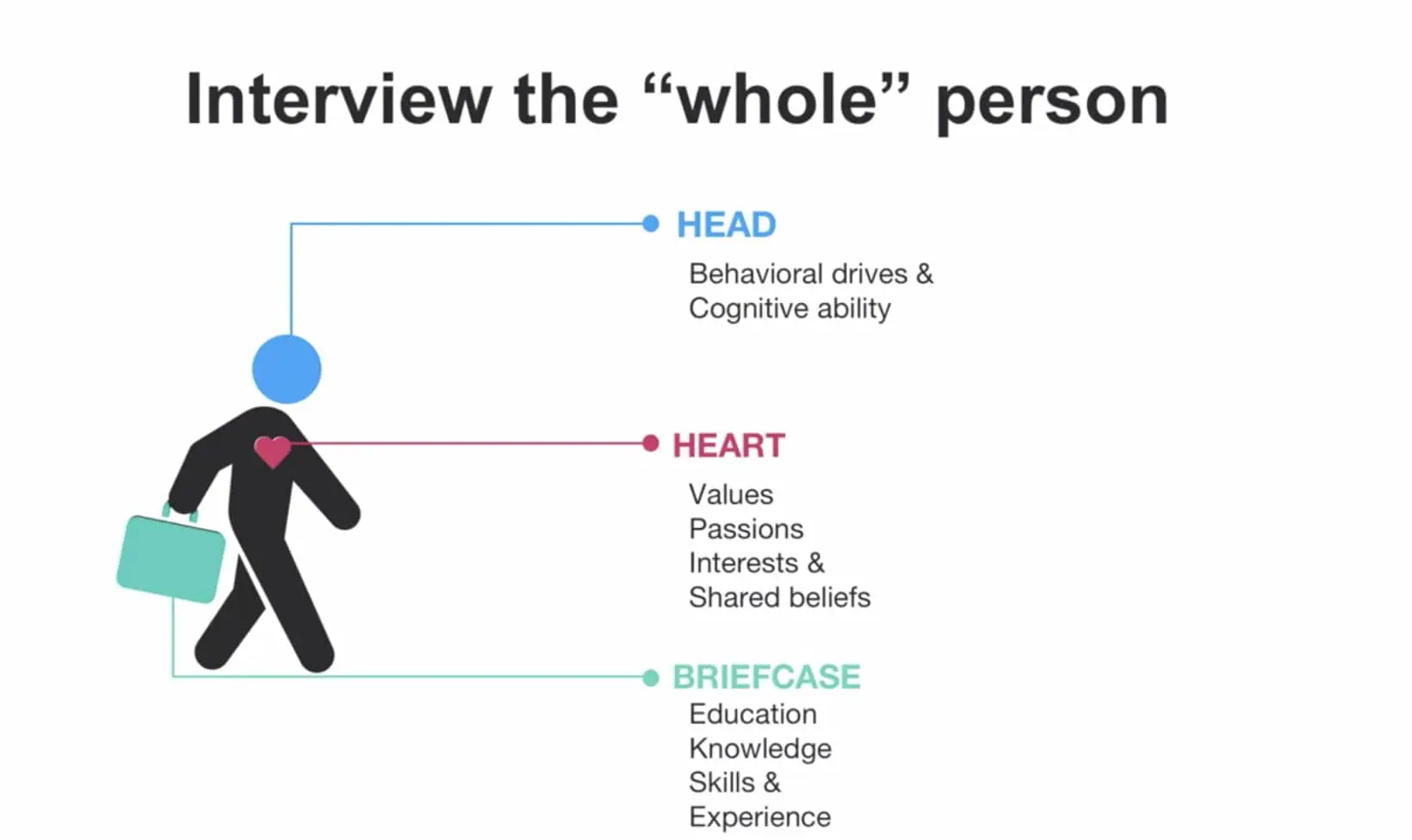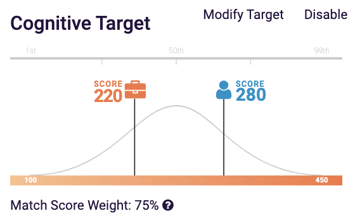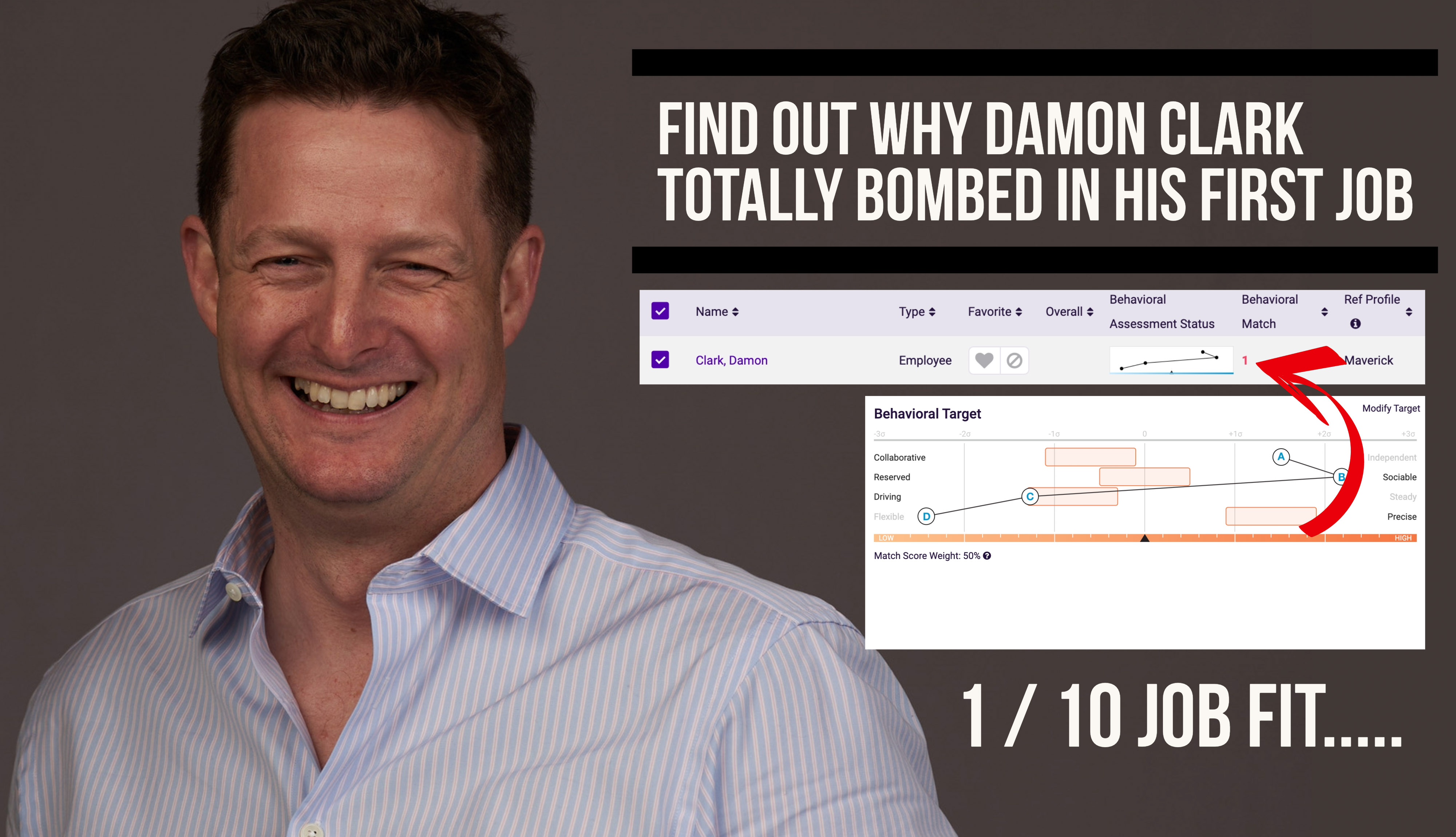How to avoid bad hires - why i was a terrible fit for my first role
In 1996, I left home and began a 4-year marketing degree, taking general business classes and majoring in marketing. Marketing classes included...
4 min read
Damon Clark : Sep 26, 2023 8:30:00 AM

Recruiting the right candidate for a position is a critical task that can significantly impact an organization's success. To make informed hiring decisions, it's essential to interview the whole person - The candidate's head (behavioral and cognitive data), heart (values and culture fit), and briefcase (experience, skills, and qualifications).
The average cost of a bad hire is 30% of that hire’s annual salary (Top 100 Hiring Statistics for 2022, LinkedIn). It can make or break an organization's success.
Skills and qualifications have traditionally been the main focus in candidate selection, often referred to as the candidate's briefcase. But there is now a much better way to hire, which involves interviewing the whole person. This involves adding the head and heart to the candidate's briefcase.
This blog post will explore how incorporating these elements into the recruitment process can lead to successful hires and foster a positive work environment.
Understanding a candidate's head involves assessing their behavioral and cognitive capabilities. Behavioral data encompasses the candidate's work style, personality traits, and preferred communication methods. Conversely, cognitive data measures a candidate's intellectual capacity, problem-solving skills, and critical thinking abilities. Incorporating assessments, tests, and practical exercises can help gauge a candidate's cognitive aptitude and how well they can handle complex challenges.
It’s essential to remember that behavioral profiles assess various dimensions of your personality. It does not measure grit, resilience, intelligence, aptitude, mental health, or values.
Behavioral data can help predict human behavior in various situations—for example, how you make decisions, communicate with others, your preferred pace, and respond to rules and structure.
With tools such as The Predive Index (see below), we can assess a job role according to the Behavioral attributes required to succeed. This can be achieved through various methods, from benchmarking historical data, analyzing top performers' behavioral data and job assessments, or combining all three.

Once we establish the behavioral and cognitive requirements, we can map candidates to a “job target” to provide a vital data point to evaluate alongside the heart and briefcase data.

If a candidate's behavioral and cognitive scores are lower than expected but score strongly in both the Heart and Briefcase areas, that's okay and not a reason not to move forward with the candidate. This information can help us avoid surprises once the candidate is employed and allow you to support the candidates in areas of the job they may struggle with.
Measuring a candidate's Heart is equally as important. The heart represents a candidate's values, motivations, and alignment with your organization's culture. Assessing the heart is crucial to ensure new hires align with your company's core values and mission. This can be done through thoughtful interviews, discussions about their personal and professional values, and probing questions about their preferred work environment.
Values and Culture fit determines how well a candidate can integrate into the existing team dynamics. Understanding their ability to collaborate, communicate, and adapt to your organization's values and culture helps create a cohesive and harmonious work environment.
Interviewing the heart does not need to be completed by HR or the Hiring manager. We recommend an employee outside the hiring department and at different job levels. This supports the hiring experience from both sides by providing an added layer of awareness and perspectives.
In addition, try to make the interview data-driven. For example, ask the candidate for examples of how they potentially embody your company's values and score responses.
The briefcase encompasses a candidate's experience, skills, and qualifications relevant to the role they are being considered for. This includes their past work experience, educational background, certifications, technical skills, and any specialized expertise they bring. Carefully reviewing their resume, conducting skills assessments, and referencing their prior work can provide insights into their capabilities and suitability for the position.
The briefcase aspect of recruitment ensures that candidates possess the qualifications and skills to excel in their roles. It also provides a foundation upon which they can contribute to the growth and success of your organization from day one.
To effectively assess candidates, it's crucial to integrate head, heart, and briefcase into the recruitment process. We recommend developing a structured interview process that includes questions and exercises targeting each element. This could consist of competency-based questions to evaluate their behavioral and cognitive abilities (for example, The Predice index), scenario-based questions to assess their values and culture fit, and skills assessments to gauge their technical proficiency.
During the recruitment process, incorporate strategies to evaluate the power trio effectively. Ask behavioral questions to assess the candidate's awareness and coping mechanisms. Additionally, involve multiple stakeholders in the interview process to gain diverse perspectives and ensure a comprehensive evaluation. Collaborate with team members to assess how candidates align with the organization's values and culture. You can make well-informed decisions beyond surface-level qualifications by embracing an integrated approach.
Recruiting the right candidates involves going beyond mere qualifications and experience. Incorporating the power trio of head, heart, and briefcase into your recruitment process is essential for finding the right talent. By considering a candidate's behavioral and cognitive data, values and culture fit, and experience, skills, and qualifications, you can make informed hiring decisions that contribute to the overall success of your organization. Embracing this comprehensive approach will help you build a cohesive, high-performing team that thrives in a supportive, values-driven culture.

In 1996, I left home and began a 4-year marketing degree, taking general business classes and majoring in marketing. Marketing classes included...
-2.jpg)
 Read More
Read More